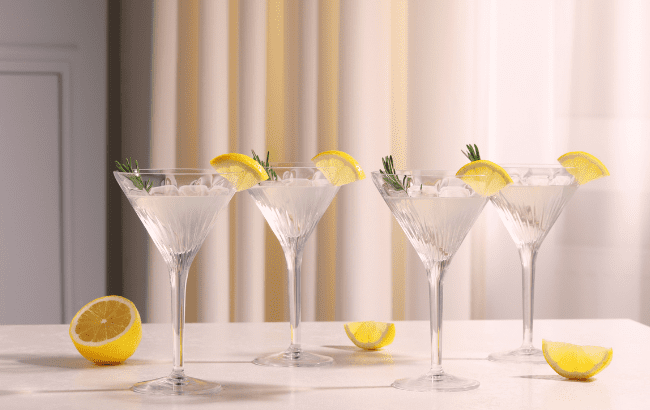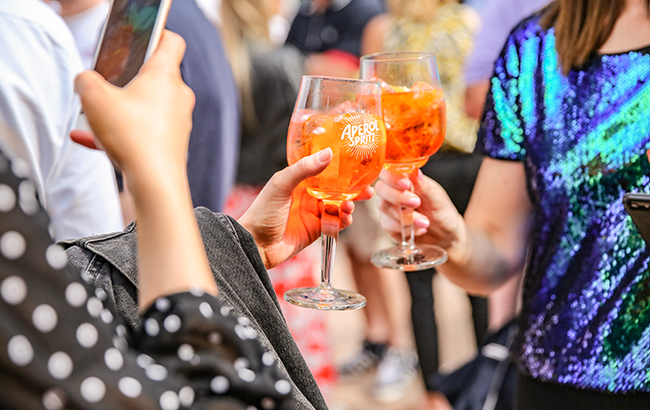Cocktails through the decades
From the Negroni to the Cosmo, Kayleigh Rattle looks back at the defining cocktails of the past century.

*This feature was first published in the June issue of The Spirits Business magazine
Since the first cocktail broke onto the scene in the early 19th century, many have followed in its footsteps, from the classic to the more experimental. Here, we look at the evolution of some of our favourite mixed tipples, plus how they’ve inspired and defined cocktail culture over the past 100 years, and left a lasting impression on what we imbibe today.
1920s: Negroni

“The popularity of the Negroni comes down to its simplicity,” says Jean-Sébastien Robicquet, master distiller and founder of France’s Maison Villevert, of the Negroni, created in 1919 in Florence, Italy, by Count Camillo Negroni. “The 1920s were a hotbed of innovation, with the Golden Age in Europe, alongside the Roaring Twenties and Prohibition in the US.
The Negroni benefitted from its birthplace; around this time, ocean liners and early air travel meant Italy was on the destination list for affluent travellers, as was the city of Florence. Italian emigration would have certainly contributed to the Negroni reaching new shores.” Now more than a century old, the Negroni continues to be one of the world’s most popular cocktails, in bars and at home.
1930s: Martini

It’s widely believed that influential bartender Jerry Thomas was responsible for creating the first Martini, at the Occidental Hotel in San Francisco in the mid-19th century. It went on to become one of the defining cocktails of the Prohibition era, which officially ended in 1933, thanks to the availability of bootleg gin.
“The Martini is having a comeback, and this has been building for the past few years,” Zoe Burgess, beverage consultant at London’s The Standard, tells us. “My prediction is that this cocktail will be the next to take the limelight. The ritualistic process of making a Martini (with or without a trolley), the iconography of the glass, and the taste of the first sip creates some serious wow factor.”
1940s: Bloody Mary

This fiery cocktail was reportedly invented by Fernand Petiot at Harry’s New York Bar in Paris, in 1921, with its distinctive name being attributed to Queen Mary I of England, known as ‘Bloody Mary’ by her opponents.
But it’s not the only theory; American film star George Jessel is thought to have created the concoction in Palm Beach in 1927, lauding it as a hangover cure. Either way, the combination of tomato juice and vodka took off in Paris the 1920s.
Petiot emigrated to the US in 1925, introducing the cocktail to The King Cole Bar at New York’s St Regis Hotel. The first recorded recipe was published in 1939, and Smirnoff Vodka began to be actively marketed in 1940s America.
1950s: Paloma

“The 1950s was a popular time for cocktails,” says Raissa de Haas, co-founder of Double Dutch Drinks. “Socialising was important, especially in the aftermath of the Second World War. People hosted cocktail parties in their homes – hence the introduction of the cocktail dress at this time, too.”
Joyce de Haas, Raissa’s twin, and brand co-founder, adds: “The popularity of the Paloma came about for several reasons. The ‘Grapefruit Diet’, which saw people eating half a grapefruit before each meal, originated in the 1930s. It was still popular in the 1950s, and people started adding grapefruit to their drinks, too. “The growth in popularity of this Mexican cocktail was further elevated in the 50s with the launch of Squirt, a Mexican drinks brand known for its grapefruit soda.”
1960s: Manhattan

Made with whisky, sweet vermouth, and bitters, the origins of the Manhattan date back to the 19th century, and it remained a popular cocktail during Prohibition, when Canadian whisky was commonly used.
One of five cocktails to be named after a New York borough, the Manhattan is widely associated with the Swinging Sixties, as also depicted by Don Draper’s predilection for the drink in hit series, Mad Men.
1970s: Snowball

While invented in the 1940s, the iconic snowball – concocted with Advocaat, lemonade, and lime (and once, brandy) – shot to fame in the 1970s where the drink would be as omnipresent as Babycham or pineapple hedgehogs at dinner parties and gatherings in UK homes, particularly at Christmas.
1980s: Espresso Martini

The energy-boosting yet elegant Espresso Martini, which combines espresso, coffee liqueur, and vodka, burst onto the UK bar scene in the 1980s.
While not strictly a Martini – it was first called the Vodka Espresso – this iconic cocktail is believed to have been devised by bartender Dick Bradsell, who worked at the likes of Soho Brasserie and The Groucho Club. He was reportedly making the cocktail for a model at the time, and this punchy mix of caffeine, sugar and alcohol quickly became a hit in London’s bars and members’ clubs.
1990s: White Russian

The 1990s is synonymous with a number of cocktails, including the Anejo Highball – rum, orange, and ginger spice, created by Dale DeGroff at New York’s Rainbow Rooms – and the fluoro Appletini (vodka, apple liqueur and lime). But it was the cult 1998 Coen brothers’ film The Big Lebowski, that arguably helped propel the White Russian, first made in 1949 by Belgian bartender Gustave Tops, into popular culture.
2000s: Cosmopolitan

As Sex and the City was omnipresent on TV screens in the 1990s and 2000s, so too did Cosmopolitans become a prolific stalwart of the cocktail scene.
This cranberry-pink drink first makes an appearance in the second episode of the hit show, becoming an icon of New York cocktail culture. Its origins are attributed to a number of people, but it’s widely believed to have been devised during the 1970s and 1980s.
2010s: Aperol Spritz

First created in northern Italy in the early 20th century, the Aperol Spritz has become a drink that is synonymous with socialising. It’s a popular ‘aperitivo hour’ tipple, where pre-dinner drinks and snacks are served in bars and homes in Italy, typically between 6pm and 8pm.
“The ritual of the aperitivo hour has strengthened in recent years,” explains The Standard’s Burgess. “Our attitude to consuming alcohol is changing, and bringing food into the mix provides, in a sense, a more sophisticated way to enjoy cocktails. Aperitivo is a ritual that’s not solely focused on the consumption of alcohol – it’s very much about the savoury snacks that are served with the drink too.”
2020s: Negroni Sbagliato

Social media platform TikTok – which has amassed more than one billion monthly active users – has become a hotbed of food and drink trends and innovations in recent years. One cocktail to experience recent viral success is the Negroni Sbagliato, where gin – as found in a traditional Negroni – is substituted with Prosecco.
Coming in at a lower ABV than the traditional Negroni, it’s a longer and lighter drink, and one that’s struck a note with Millennials and Gen Z in particular. “It was only a matter of time before this historic cocktail began to take a little of the limelight from its cousins, the Negroni, Spritz, and Americano,” says Burgess. “Bitter-tasting cocktails are also becoming more widely accepted by the general public, and bartenders and brands have been looking for ways to widen the bitter-cocktails category.”
Related news
